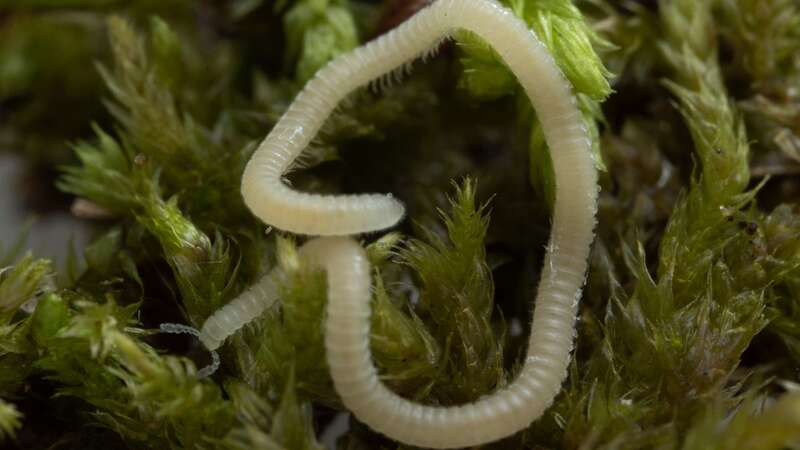

Los Angeles has become the birthplace of a newly discovered species: the Los Angeles Thread Millipede (Illacme socal).
Naturalists exploring a Southern California hiking area near a freeway, a Starbucks stumbled upon this tiny arthropod just underground. The team used DNA sequencing and analysis to confirm that it was indeed a new species.
Described as approximately the length of a paperclip but as skinny as pencil lead, the Los Angeles Thread Millipede boasts a unique appearance with its translucent and curving features reminiscent of a jellyfish tentacle, Fox31 first reported.
The creature, measuring four inches in length, burrows deep below the ground's surface and relies on hornlike antennas protruding from its head to navigate its surroundings, as it is completely blind.
What makes this millipede extraordinary is its incredible count of 486 legs, giving it a helmet-like appearance when viewed under a microscope, akin to a creature straight out of a Hollywood monster film.
 Insect blamed for mystery rise in life-changing illness that alters eye colour
Insect blamed for mystery rise in life-changing illness that alters eye colour
The discovery was made by a research team that included entomologists from the Virginia Polytechnic Institute, West Virginia University, and the University of California, Berkeley.
Entomologist Paul Marek, who was part of the research team, said: "It's amazing to think these millipedes are crawling in the inner cracks and crevices between little pieces of rock below our feet in Los Angeles."
Naturalists Cedric Lee and James Bailey, made the discovery. Cedric said: “We don’t know what’s completely out there,” Lee said. “There’s literally undescribed species right under our feet.”
The findings on the species were published in the journal ZooKeys on June 21, earning the creature the vernacular name Los Angeles Thread Millipede.
The newly discovered millipede joins other millipede species found in California. One of its counterparts, the Illacme plenipes, held the record for the creature with the most legs ever recorded until 2021 when a millipede with a staggering 1,306 legs was found in Australia.
Millipedes play a crucial ecological role as they feed on dead organic material, preventing the buildup of decaying matter. Marek emphasized their importance, saying, "Without them, people would be 'up to our necks' in it." Understanding these species' role in the ecosystem is vital for their protection and, in turn, the environment that safeguards humanity.